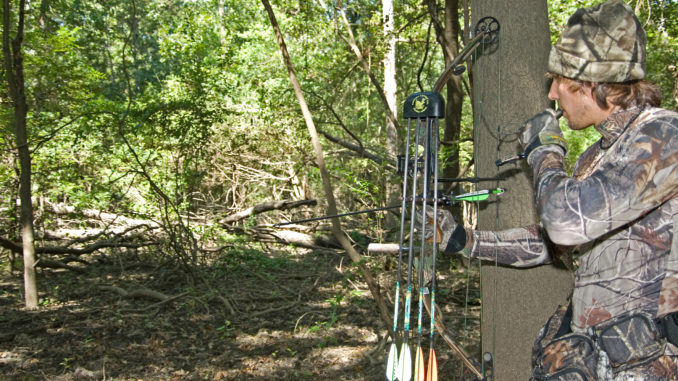
Walking up on deer is not a natural skill for many hunters, but Chackbay’s Josh Chauvin has it down to an art. And it’s a major part of his public-land hunting.
While stalking can be frustrating, Chauvin employs it selectively.
“I only stalk prime areas so I don’t get frustrated,” he said.
He starts by stalking to his stand site in the morning, and then he often gets down after several hours and slowly works the area from the ground.
And “slowly” is the operative term.
“I might stalk a quarter of a mile in an hour,” Chauvin said.
Of course, for best results he only eases through the woods when conditions are optimal.
“I wait for wet, damp conditions so I can move more quietly,” he said.
His approach to stalking is pretty basic — move only a few steps at a time. But it’s not as simple as just walking around.
“I watch my feet whenever I move,” he said. “I’m making sure I’m not stepping on a stick or something else that will make noise.
“You plan each step.”
That way, deer at most see some movement.
“If they see you, they just see movement,” Chauvin said. “Deer see movement all the time, so if you don’t make noise, they won’t spook.
“As soon as they hear noise is when they take off.”
To capitalize, he works on keeping his upper body as still as possible when he’s taking steps.
“I try to move only my legs so deer don’t see me moving too much,” Chauvin said.
Moving only at appropriate times minimizes the chances that deer will pick up his slight movements.
“When it’s windy, I’ll walk when the wind is blowing,” he said.
Each time he stops, he then stands still for some time watching for movement.
Other successful stalkers might look all around, but Chauvin focuses his attention only on the specific spot he’s stalking toward. For instance, he might be easing up to a ridge with feed trees, so he looks only at that ridge.
“If you know where they’re feeding, the odds are very good at seeing deer,” he said. “By looking only at that feeding area instead of all around, I’m able to really focus on what’s there.”
If the feed areas are empty, Chauvin will move on to likely bedding areas.
“I go to all the tree tops, approaching them with the wind in my face,” he said.
He moves slowly closer until he’s only 10 to 15 yards from a top, but he doesn’t expect to see the animal huddled up.
“It is so hard to see a deer that is bedding down,” Chauvin said. “They’re so camouflaged.”
Instead, he will ease a call to his mouth.
“I’ll either grunt or use my doe call and see if I get them to stand up,” Chauvin said.
Amazingly, he said deer will often stand up and walk toward him.
If deer bust him and head from a bedding or feeding area tail up, Chauvin doesn’t give up.
“Sometimes they’ll jump and sometimes they’ll blow,” he said. “If they blow and you have a call, you can settle them down.
“If they jump, they don’t go too far.”
Even if he doesn’t get a shot at a deer he jumps, Chauvin remembers the spot.
“When I jump up a deer, I always mark it down mentally or on my GPS,” he said. “I can then go back and hunt that area later.”
Stalking has significantly increased his success rates.
“I was seeing deer on 30 to 40 percent of still hunts,” Chauvin said. “When I added stalking, I see deer on over 75 percent of my hunts.”
Editor’s Note: This story appears as part of a feature in Louisiana Sportsman’s November issue. To ensure you don’t miss any information-packed issues, click here to have each magazine delivered right to your mail box.


